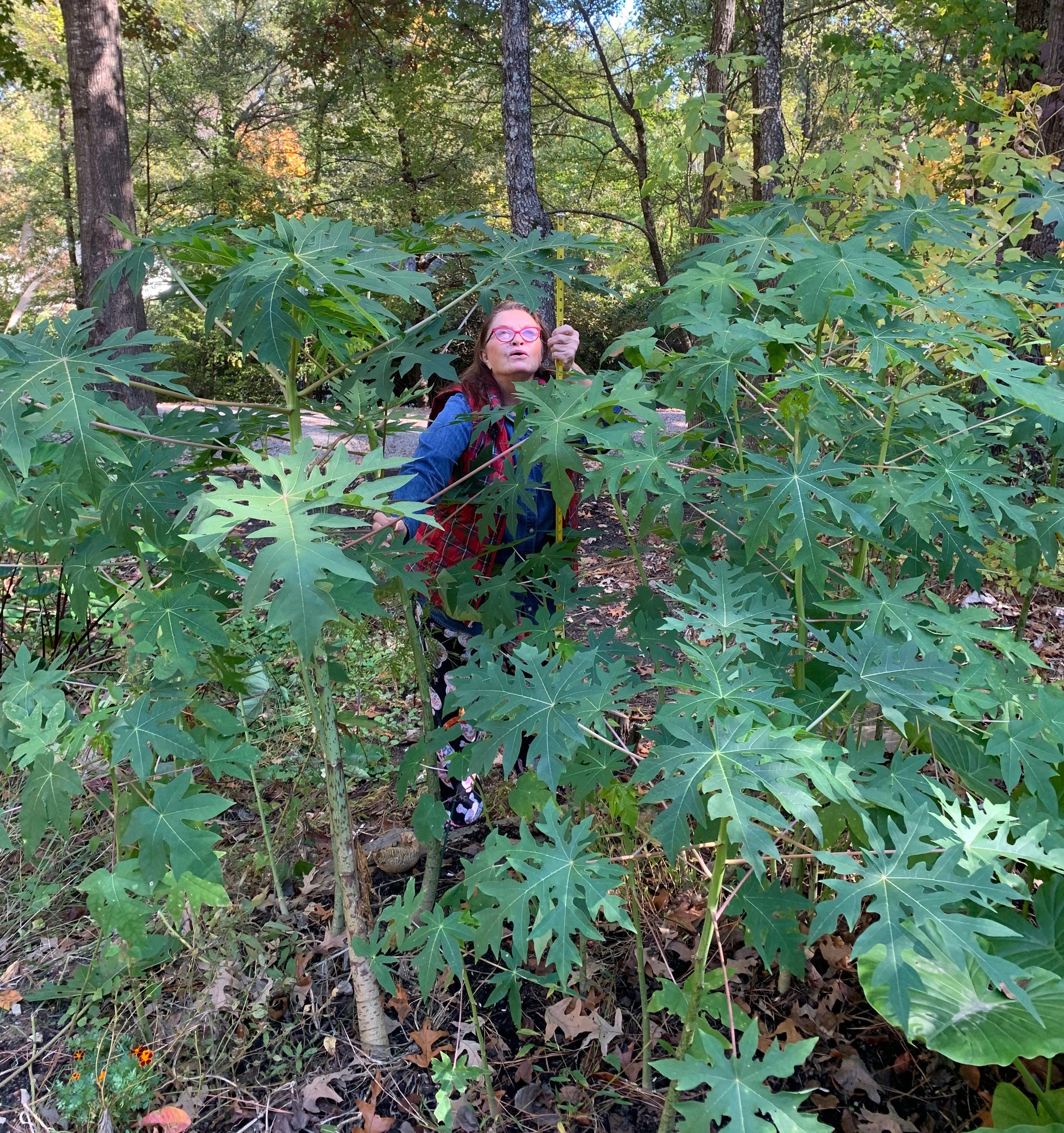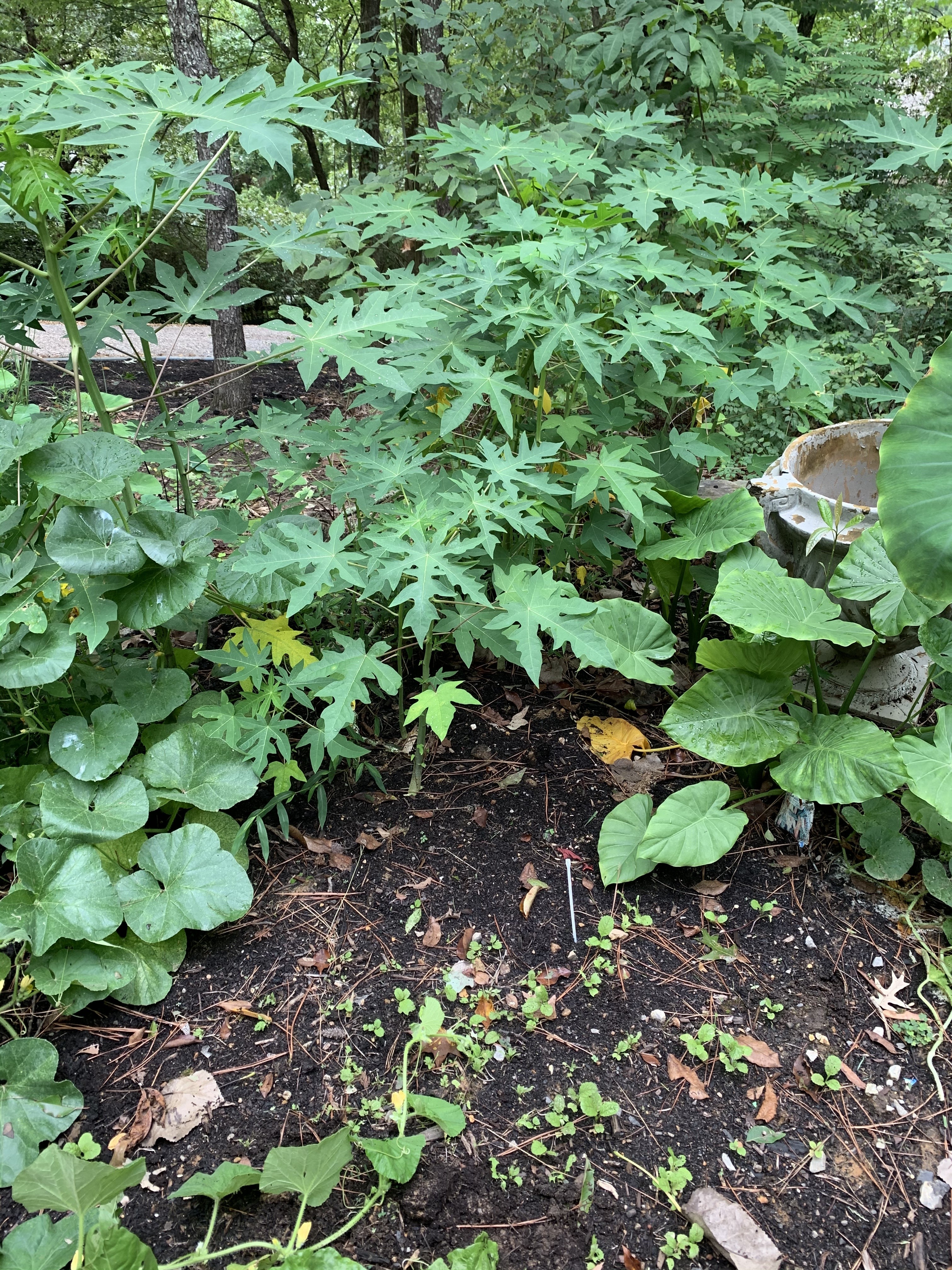
Move over banana trees. Papaya trees have arrived.
Susan Thompson is the proud owner of more than 100 papaya trees, some almost eight-feet-tall, in her yard in Germantown.
She didn’t intentionally plant them. They’re an accident.
When she saw the plants, Thompson thought, “This is okra.” But, she says, “I looked at it. This is not okra because it doesn’t have that red dot in the center.”
Then, she says “We thought it was marijuana. But we didn’t know how that would get there.”
She went to the PlantSnap plant identifier app on her phone and discovered it was papaya.
Her husband, Jon Thompson who was director of the Wonders Series, is to blame, Susan says. “He goes to the [Cordova International Farmer’s Market] and he brings home all these things he had when he was a bird dog pilot in Vietnam. Jon will eat anything. We used to call him ‘the garbage man.’ When the girls were little he’d walk around the table and whatever was leftover he’d eat.”
Jon began bringing home papaya, which they loved. Susan, a lifetime Master Gardener, threw the leftover papaya rinds and seeds in her “lasagna garden,” which also is called “a lazy man’s garden,” she says. “You put down dirt first. And then you put down cardboard or newspaper. And then compost made from whatever you have: banana peels, lettuce, whatever was in the back of the refrigerator that you forgot.”
A layer of lime then is added. “And you just keep layering it. And if you are a worm gardener, you dump some of the worms in and they’ll eat their way up from the bottom, pooping as they go. Fertilizer. And you just let it sit. The next year it’s perfect soil.
“So, this year, every time I walked by I’d just throw whatever leftovers in the garden. It looks terrible, but I don’t care. We live where nobody sees it. So, it just gets better and better during the year.”
She had other plants in the lasagna bed. “I had all sorts of elephant ears, alocasias, colocasias. It was just sort of a throwaway bed for all the abandoned and no-good things. I’ll just put them in there. What I wanted to grow was all sorts of sunflowers and nothing really came up.”
The papaya plants, which had no diseases, weren’t babied at all. She believes they might grow taller with the recent warmer temperatures. “If fertilized, they could be even taller. They got nothing.”
They’re a pretty plant, Susan says. “It’s not grass green. It’s deeper than that. But it’s a color that would be pretty as a tablecloth. It would be a pretty skirt. It would be a pretty dress.”
Her lasagna garden isn’t in full sun. “It gets some in the afternoon. It has nice light.”
Her papaya plants grew under ideal conditions.When you cut open a papaya, you’ll see the seed is protected,” she says. “They have mucus all around it, so that kept it damp. And then it had the earthworms and the damp compost. So that’s how they germinated.”
Ironically, Jon owned a papaya plantation 30 years ago in Jamaica, Susan says. “Strawberry Sunrise” was the type papaya he grew. “Small and beautiful pinky red color.”
This year, she says, “We thought we would have Jamaica in Memphis.”
Like banana trees or elephant ears, papaya trees would add a tropical effect around a swimming pool or other areas of the yard, Susan says. “It would be a good icebreaker for people who came to your pool for the first time.”
She doesn’t think the plants will live through heavy frosts. “I don’t think it’s going to last through the winter.”
But Susan plans to “purposely” plant papaya seed next spring. “I had no clue this was going to grow. It just grew because it thought I’d be a good mother.”

Susan Thompson’s papaya plants when they were young.